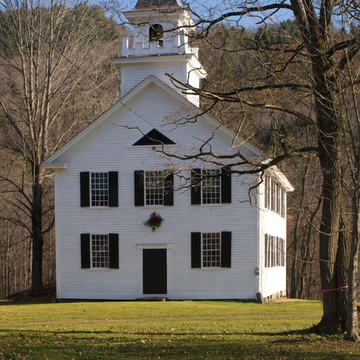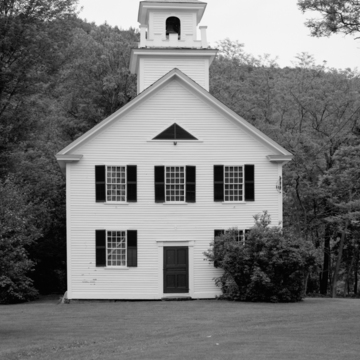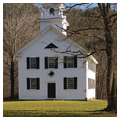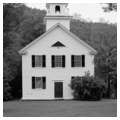The Greek Revival hall in its green setting is a handsome remnant of what was once a bustling town center. Royalton village was established when Ebenezer Brewster gave the common in 1781 and speculator Zebulon Lyon developed village lots around it after 1788. It evolved in the first half of the nineteenth century into a typical agricultural town center with a town hall, academy, churches, shops, and some thirty dwellings around and in the loosely defined common. The town hall and academy buildings were in the center of the common. When both burned in 1839, town and academy joined forces to construct a single building that reflected early courthouse and educational ideas within the state. It is a gable-front building with a central door and surmounted by a tiered bell tower with battlements and a small dome. The town used the first floor and the academy the second until 1851, when the academy moved into the 1840 Methodist Church on the north side of VT 14. The Methodists and Congregationalists, along with most of the commerce, moved to the new, railroad-oriented village of South Royal-ton. Fires and the flood of 1927 furthered the attrition, but the dignified town hall remains on the common, a vestige of Royalton's former vital hub.
You are here
Town Hall
If SAH Archipedia has been useful to you, please consider supporting it.
SAH Archipedia tells the story of the United States through its buildings, landscapes, and cities. This freely available resource empowers the public with authoritative knowledge that deepens their understanding and appreciation of the built environment. But the Society of Architectural Historians, which created SAH Archipedia with University of Virginia Press, needs your support to maintain the high-caliber research, writing, photography, cartography, editing, design, and programming that make SAH Archipedia a trusted online resource available to all who value the history of place, heritage tourism, and learning.









